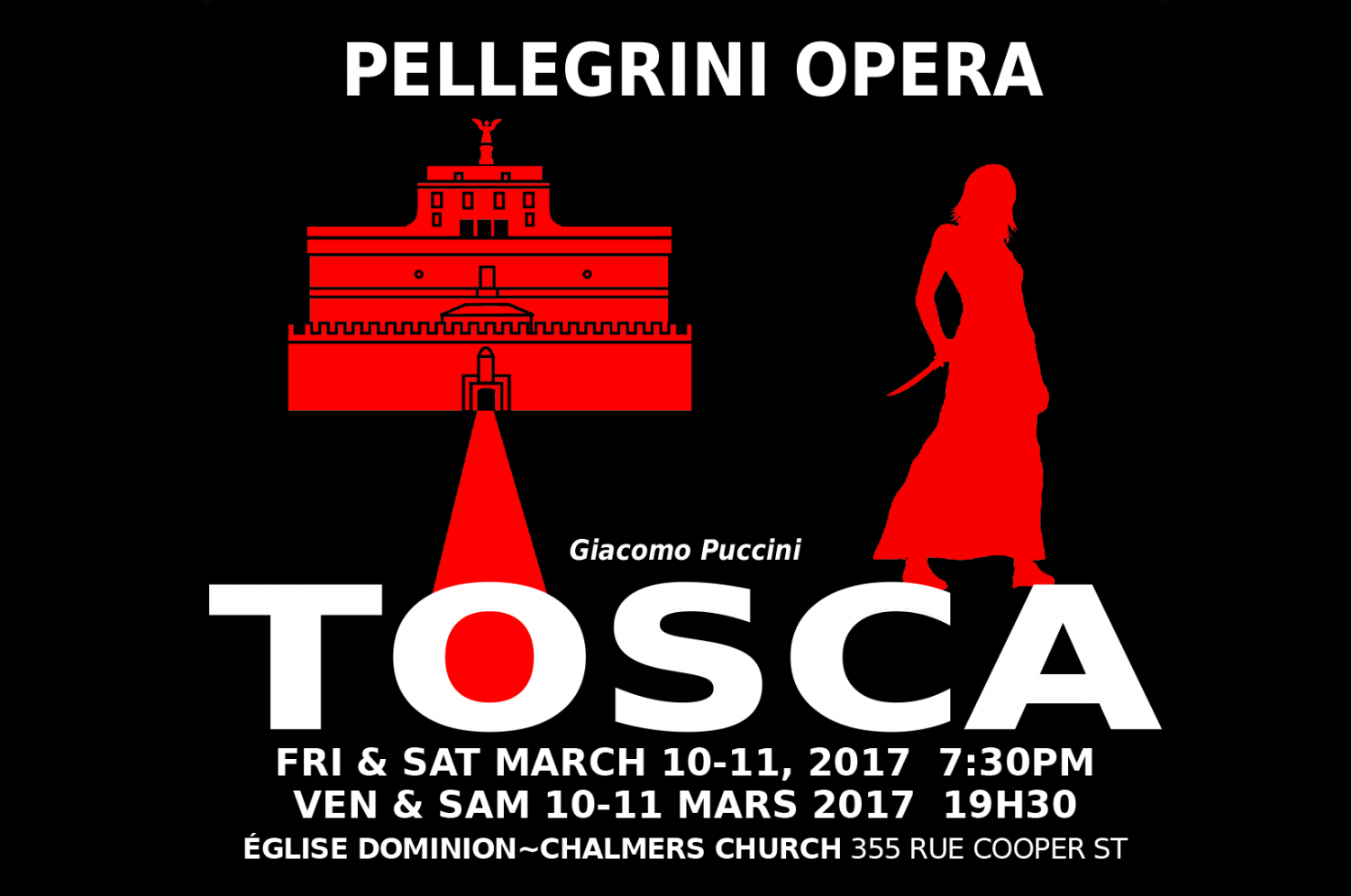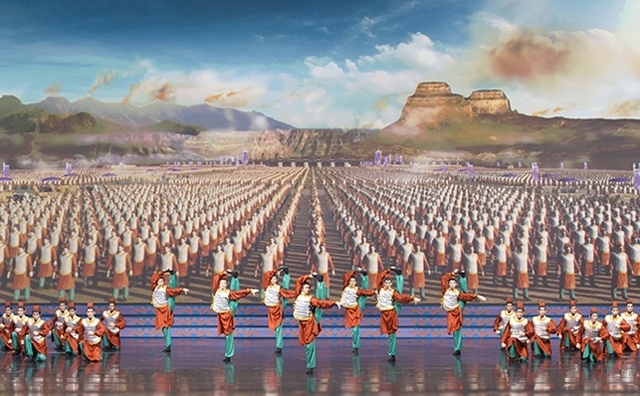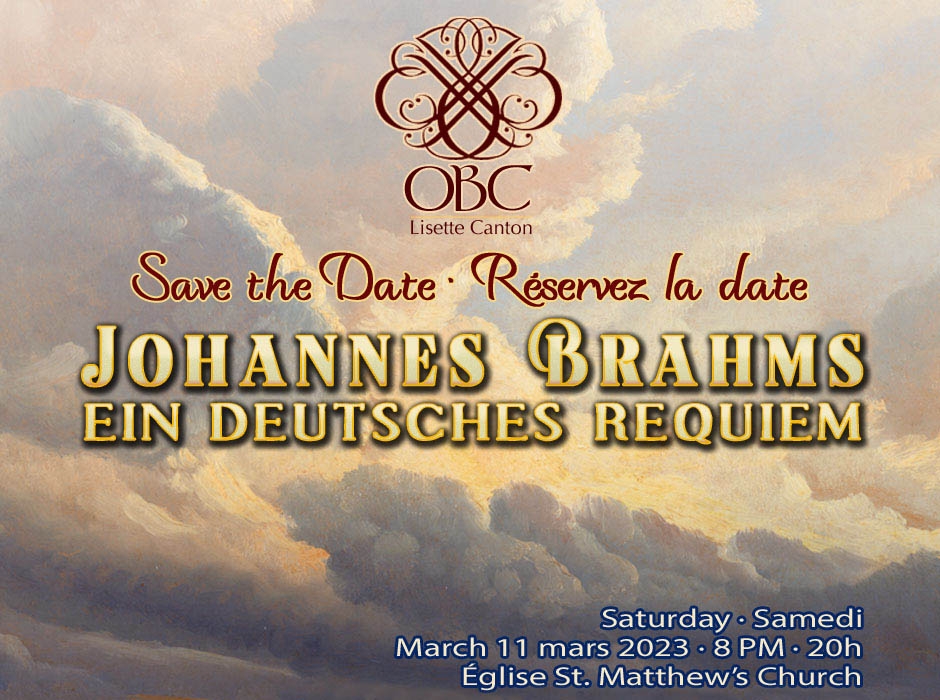
Tosca Ready Seduce Ottawa Opera Lovers
Tosca has been called many things. She’s been labeled as brutal, painted with bloody brush, declared shocking and, most certainly, she’s scandalous. This weekend, however, she can be your date for a night at the opera.
Acclaimed Music Director Michel Brousseau and Artistic Director Vincent Thomas lead the Pellegrini Opera company for two performances of the Puccini masterpiece Friday and Saturday evening inside the acoustically glorious Dominion-Chalmers Church. For a community still nursing the wound of losing the beloved Opera Lyra company a few years ago, any return to the musical art form here would truly be welcomed as, well, operatic! Brousseau is happy to oblige.
“It was indeed very sad when Opera Lyra had to put an end to its activities not only because the company was doing a great job but, also, for what it meant for Ottawa,” Brousseau tells Ottawa Life quick to add that, in his mind, it is simply “inconceivable…that the capital city of Canada would not present great opera works!”

Since 2004, Pellegrini Opera has made a profound effort to make the great works available to all regardless of income or age though you may want to keep the wee ones home for this one. Tosca pulls no punches. In fact, she comes baring a crimson soaked dagger.
While composer Giacomo Puccini is most associated with Tosca, the story behind the famed piece was inspired by the now nearly forgotten French playwright Victorien Sardou. Written in 1887, the story is set over an 18 hour period in 1800 Rome following the French victory in the deadly Battle of Marengo. While Verdi first showed an interest in adapting the production into an opera it was Puccini, after seeing the play on its Italian tour in 1889, that snatched up the rights to develop Tosca into one of opera’s most well known divas.
“Tosca is one of the most dramatic opera work ever written and one that has the power of reaching out in all us our deepest emotional fibers. The opera Tosca is all about passion, lust and jealousy; it’s about resilience and the power of love in the adversity. But Tosca is also about political power, especially the abuse of power, and the control one seeks to impose through lies, cruelty and fear. These are themes that continue to challenge us directly today,” says Brousseau on the why the opera still resonates over 100 years later.
The piece, he says, is structured like other Puccini operas in what is called a through-composed work. Arias, choruses and various other musical elements (including Wagnerian leitmotifs), work together to create a seamless whole. While some critiques over the years have tried to piece together the work’s often confusing plot, Brousseau thinks Tosca can be surmised fairly simply by a single word or, if you prefer, number.
“I would say that the overall musical structure of the opera can possibly be best described by the number 3; which acts as another subtle leitmotif. What I mean by this is, for instance, that Tosca is an opera in three acts, set in Rome in June 1800; it involves mainly three strong characters, Tosca, the diva; Mario Caravadossi, the painter and Tosca’s lover; and Scarpia, the chief of police, who wants to possess Tosca. Right from the start, your attention is grabbed by the first three bars, which sets unmistakably the dramatic tone of the whole piece. – a pattern repeated often through the piece.”
Brousseau continues to touch upon the theme of triads by not only including the obvious love triangle in the piece but, also, the interlinking trilogy of lust, passion and jealousy which dictate the more tragic and dubious actions in the story.
Internationally celebrated soprano Maria Knapik will step into the role she may have just been born to play with a sensual stage presence that is sure to quickly seduce the audience. Though she’s been involved with music in some form for as long as she could remember, it was hearing a classically trained vocalist for the first time that had the most profound effect on her musical career.

“Her voice went right through my soul,” Knapki says. “I couldn’t believe that one voice could have such a purity and power.”
Tenor Steeve Micheaud is perfectly cast to bring just the right slice of charisma needed for the role of Mario Cavaradossi, the artist. The character knows every detail about his lover. He could paint her with his eyes closed. However, it's his more humanitarian side, his want to defend the rights and freedoms of those around him while clinging to the importance of his art, that Micheaud saw in himself.
“I'm rather close to a Cavaradossi,” he says. “Above all, what I adore is the privilege we have on stage to touch people, offer them a moment of truth, a moment of escape, travel, liberation, communication. This is where my passion lies, communicating beyond the text with the audience.”
In developing such a prominent piece, Brousseau says it was important to be as respectful to the feelings Puccini wished to musically convey in his compositions. Opera can be a very emotional experience for the listener, he adds, and Tosca may be one of the most demanding for an audience. He looks at the famed love duet between Tosca and Caravadossi at the start of Act 1, “Vissi d’arte”, or the moving cantata “O galantuomo, come andò la caccia?” as particularly soul stirring, but equally complex, pieces.
“Tosca is singing backstage a beautiful and religious-like cantata while Scarpia and Caravadossi verbally confront one another. How Puccini succeeds at juxtaposing these two opposing emotions – one chilling and another one spiritual – is a real tour-de-force. I just love it!”
Tosca will be presented in a new orchestral version with the original full orchestra sound specially recreated for Pellegrini Opera by Ottawa composer John Sarkissian. Tickets are available at The Leading Note, and Books on Beachwood as well as online








